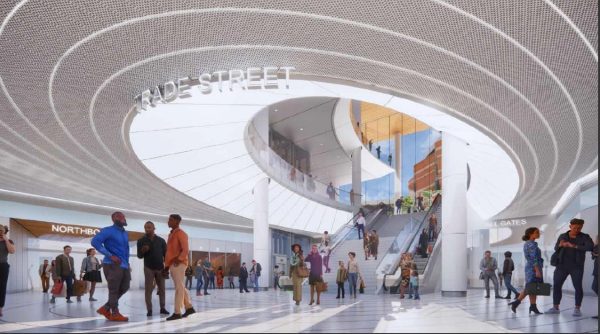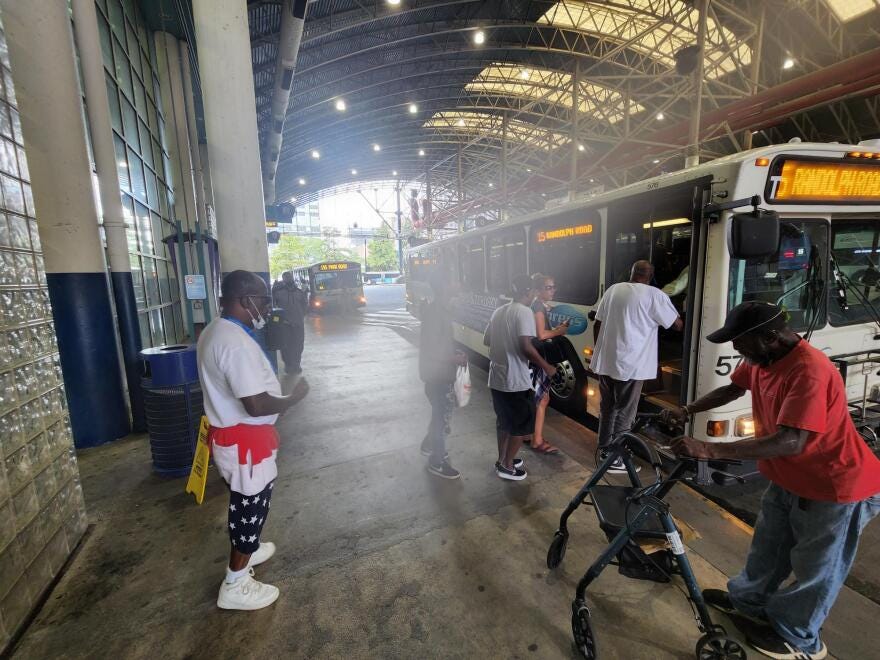Transit Time: More questions on CATS’ push for underground bus station

The Charlotte Area Transit System gave the City Council’s transportation committee its recommendation on Monday for how to rebuild the new bus station uptown.
As expected, CATS backed the idea originally proposed by a private developer: placing the bus station underground to clear the way for a new tower with offices, retail and a hotel. The other possibilities include rebuilding the bus terminal at street level or placing it on a second or third floor.
But a close look at how CATS came to this recommendation raises more questions as to whether transit officials are being neutral brokers of information. The City Council will vote on a final plan among the three options.
Republican council member Ed Driggs, who chairs the committee, said he’s concerned that the city is pushing council members toward the outcome they and the private developers want.
“I think it was clear from the presentation that their assessment has led them to prefer the concourse (or underground) outcome,” he said.
The issue reflects a recurring tension between the City Council and staff: Who makes decisions, and when is what staff presents a fait accompli?
And for the first time, the city detailed the estimated costs for the project: Building a new bus station at street level would cost between $45 million and $55 million. Building it underground would cost nearly $90 million. The public would pay for the project, with financing sources that include the value of the land and federal and local grants.
Here is how the bus station would change:
In the bus station today, passengers can wait in either climate-controlled waiting rooms or under a canopy. There are no areas restricted to ticketed passengers. People are free to walk anywhere in the facility, including through the area where buses are parked.

CATS wants a new design in which passengers can access buses only through a centralized, climate-controlled waiting room. With one or two access points, CATS said it can better provide security for passengers by making sure that only people with tickets can enter.
The new bus station would resemble an airport, in that the passengers would be in a central concourse, and then walk through a gate to reach their bus. (New York City’s Port Authority bus terminal has a similar design.)
In its presentation to council members, CATS said building the bus station underground or on a second or third floor would allow them to meet goals of having better security, safety and a climate-controlled waiting room.
It said rebuilding the station at street-level would not achieve those goals. It also said building the station at street-level wouldn’t allow for good connections to the Lynx Blue Line and the Gold Line streetcar.
But CATS chief executive John Lewis and planner Jason Lawrence gave council members no detailed explanation of why those goals couldn’t be accomplished by building at street level. They simply stated this as fact, with no elaboration.
WFAE and Transit Time asked CATS: Why couldn’t it take the exact design for the underground bus terminal and build it at street level, thus saving an estimated $35 million-$45 million?
CATS did not reply.
City officials said Monday that building the station at street level would mean forgoing the larger project with the developer, White Point Partners. They said they would like a development agreement signed by next year and have a new station open by 2029. There would be a temporary station on an adjacent lot starting around 2024.
The reality is that CATS could tear down the existing bus station and then build a new one on site, without spending millions of additional dollars to dig a 50-foot-deep hole in the ground.
CATS could build a centralized bus waiting area on street level. It could be climate controlled, and it could have one or two access points to help with security. Passengers could ride an escalator up to a bridge that would cross the bus bays. They would then ride an escalator down to the waiting area.
The transit system could have seamless connections to the Gold Line streetcar, as well as to the light-rail line. And the area where the buses park and pick up passengers could be mostly closed off, so passengers could enter the waiting area only through the dedicated access points.
Former CATS chief executive Ron Tober said in an interview that CATS could do all of those things with a new station at street level.
“It doesn’t have to be underground,” Tober said. “This is being driven by the private developer. This isn’t being driven by what’s best for passengers.”
Natural light: One odd moment from the presentation is that Lawrence told council members that passengers have said they would like to have natural light in the new facility — a prominent feature of today’s canopy design.
Lawrence then said the best design is placing the station underground, which makes having natural light more challenging.
Driggs said he hasn’t seen the city make the case that it’s worth spending an additional $45 million to place the station underground.
But most of his colleagues on the transportation committee are enthusiastic about the idea. The City Council will likely vote on the design early next year.
Steve Harrison is a reporter with WFAE, Charlotte’s NPR news source. Reach him at sharrison@wfae.com.
Related Transit Time article:
This story was originally published as part of the Transit Time newsletter, jointly produced in partnership between The Charlotte Ledger and WFAE.
Steve Harrison